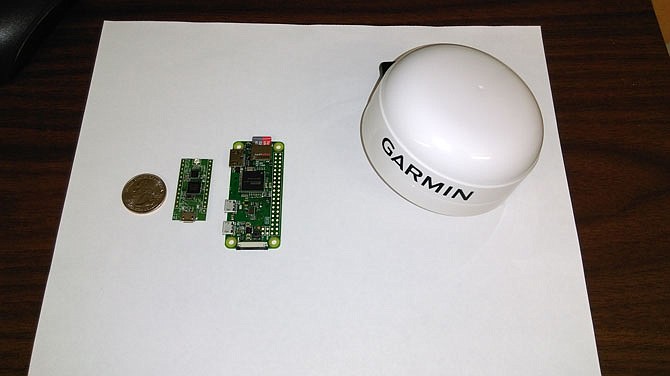In an effort to improve space weather forecasting capabilities, researchers from Boston University are seeking a few Mid-Missourians willing to lend some space in their yards to measure the ionospheric response to Aug. 21's total solar eclipse.
Ionization is the creation of electrically charged particles following exposure to radiation or other electrical discharges. Ionization happens frequently in the atmosphere when air is bombarded by ultraviolet and X-ray radiation from the sun; the process also happens during auroras, which might be more familiarly known as the northern and southern lights.
Less sunlight over Missouri during the eclipse will presumably mean less ionization locally, and the dip in ionic activity is the response that can be observed with electronic equipment. Sebastijan Mrak described this measurable disturbance in ionic activity as "similar to the waves generated by a bow and stern of a ship," with the eclipse being the ship.
Mrak is a Ph.D. student at Boston University and a research assistant with the Center for Space Physics.
He said the project has received funding from the National Science Foundation, but the research team now is looking for people living between Jefferson City and Springfield who will let them put a small GPS receiver in their yard.
Mrak specifically cited locations like Eldon, Osage Beach and Camdenton, but added people in Jefferson City are welcome to offer their yards, too.
He said the Missouri Department of Transportation already has a network of 84 GPS receivers he and the other researchers can use, and he's hoping to find 10 more locations perpendicular to the eclipse's path to deploy 15 more receivers.
The perpendicular positioning will allow the researchers to observe any ionic waves that propagate out from the eclipse's path of totality - its darkest shadow wherein sunlight and resulting ionization will be most diminished.
Mrak said an ideal yard would have some open space to prevent interference with the receiver; anywhere between about 30-65 feet of space away from trees and structures will do.
"I cannot deploy antennas in between houses because houses create mirrors for radio waves," and the bouncing reflections will cause signal distortions, he said.
The GPS receiver is in a small plastic box "like the size of a small notebook," he said - about 8-by-4.5-by-2.5 inches. The receiver is a circuit board only about the size of a quarter, and the accompanying computer processor is a circuit board about twice the size of the receiver. The antenna for transmitting data will be mounted on a camera tripod.
The setup needs access to one AC power socket. The amount of electricity it will use will be nominal, Mrak said.
He will arrive in Missouri on Aug. 15 and would like to install all the receivers by the evening of Aug. 18. The equipment would record data until Aug. 24.
The ultimate goal of the project is to evaluate how effective cellphone-class GPS receivers can be as tools to collect data on space weather.
Mrak explained space weather refers to the conditions produced by the sun, which the University of Alaska-Fairbanks explained ejects magnetically charged plasma in what's known as solar wind.
This solar wind's interaction with the Earth's magnetic field is what produces the northern and southern lights. Solar storms of large amounts of ejected plasma can release enough energy to endanger astronauts, cause satellites to malfunction and even to overload electrical grids on the ground.
A March 1989 solar storm knocked out power for 12 hours for the entire Canadian province of Quebec, NASA reported.
National Geographic reported a modern repeat of the largest solar storm on record that happened in 1859 could cause enough damage to power grids so as to leave cities without power for weeks, months or even a year.
Mrak said ionospheric activity tells scientists about what the sun's doing.
He said GPS receivers have proven to be good tools to measure ionospheric activity, but there are large spatial gaps in the current data collection system, mostly over Central and South America, Africa and most of Asia.
Large installations to monitor space weather also cost hundreds of millions of dollars, he said.
Currently, space weather forecasts can only project out about half a day, but if data collection improved, then forecasting could be improved too, which would then mean more time to react to an incoming solar storm, he said.
If the experiment during the eclipse shows proof of concept with the Boston University team's solution of using the small GPS receivers embedded in cellphones all over the planet, it could fundamentally change how space weather is monitored.
"If we can use our GPS senors in our cellphones, that would be a revolution," Mrak said.
The eclipse is "a unique experiment to test new instrumentation," he said, because the researchers know what to expect and can focus on the effectiveness of their data collection method.
Mrak said people interested in volunteering their yards for the project can contact him at 857-272-9866 or by email at [email protected].

